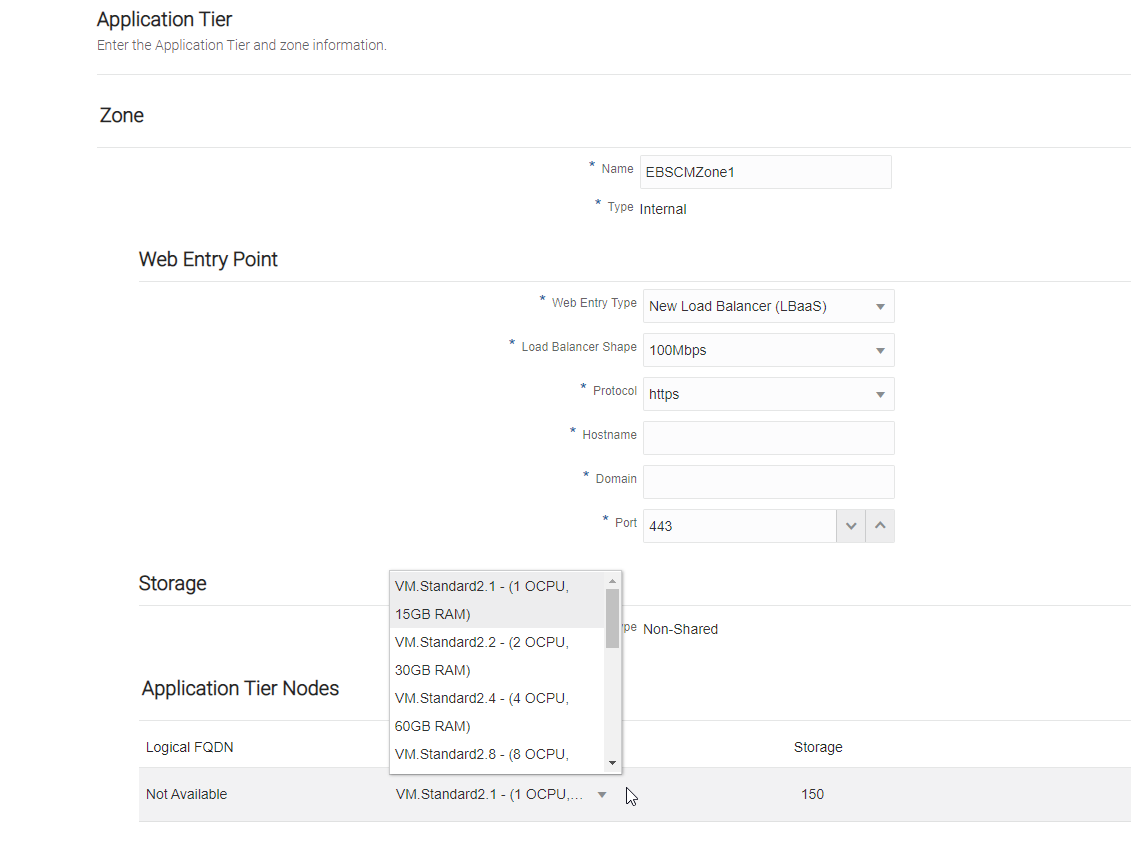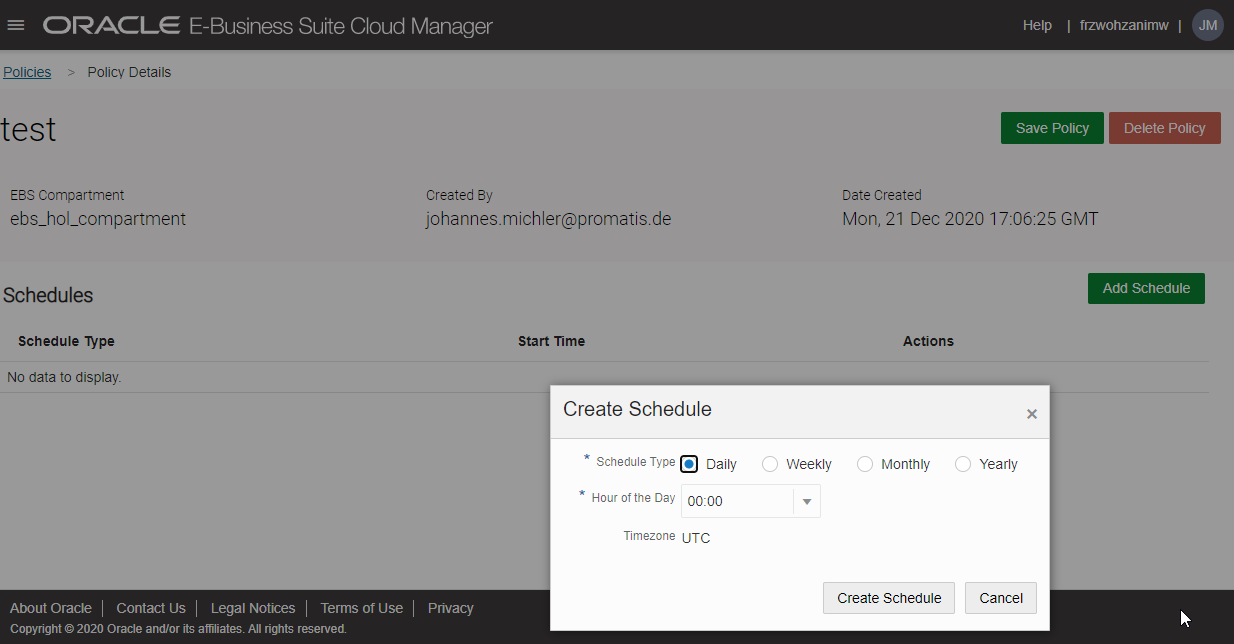
Last week, Oracle released the latest version of E-Business Suite’s Cloud Manager tool. There is a blog post over there (https://blogs.oracle.com/ebsandoraclecloud/get-ebs-cloud-manager-2021) outlining the new features. I took a quick look at the features and upgraded two Cloud Manager instances to the latest release. Let’s have a look at how this went.
New Features in 20.2.1
From the (long) list of new features and fixed bugs in the new release, these are my personal highlights:
- Extensibility Framework
- This feature allows you to add your own post-cloning-steps that are then executed automatically whenever a new fast-clone or a restore of a backup is performed. This is a very convenient feature and it saves some time by not having to call those post cloning scripts manually after the initial provisioning is completed.
- I will describe this in more detail in a dedicated blog post soon.
- Changing target shapes when doing “fast clones”
- In the past, you could not change the “size” of the compute instances running as the fast-clone target. If your production environment serves as a basis, your newly created dev/test instance would have the same number of (O)CPU cores / Memory as your source instance had. This restriction has now been lifted (at least for the Apps-Tier; I assume this is not possible for the Database, since a smaller compute shape might have less memory and thus prevent the Database to come up):

- In the past, you could not change the “size” of the compute instances running as the fast-clone target. If your production environment serves as a basis, your newly created dev/test instance would have the same number of (O)CPU cores / Memory as your source instance had. This restriction has now been lifted (at least for the Apps-Tier; I assume this is not possible for the Database, since a smaller compute shape might have less memory and thus prevent the Database to come up):
- Backup Scheduling
- If you want to have a nightly / weekly / monthly backup of your E-Business Suite instance that can then (e.g.) be restored as a new Clone of your production instance this can now be conveniently scheduled:

- If you want to have a nightly / weekly / monthly backup of your E-Business Suite instance that can then (e.g.) be restored as a new Clone of your production instance this can now be conveniently scheduled:
- Automated Standby Deployment
- It is now possible to do an automated “incremental” Lift&Shift from on Premise to the cloud by leveraging the new “Automated Standby Deployment”. Under a number of preconditions, you can first create a copy of your On Premise production environment in a “standby database” on OCI and then transfer only a small amount during the downtime window.
- Multi-Zone-Support
- Often E-Business Suite contains not just internally accessible applications, but also provides functionality such as iSupplier Portal, Oracle Sourcing or iStore accessible to external users. These are usually provided in a separate network (even a DMZ) providing only limited access. Such scenarios are now possible with Cloud Manager 20.2.1
Issues realized
After having upgraded the environment according to https://docs.oracle.com/cd/E26401_01/doc.122/f35809/T679330T679341.htm#T681852, I was no longer able to access the UI with my user. This is due to the fact that Oracle has “shut down” my workaround of connecting multiple “front end” users to the same technically OCI user interacting with E-Business Suite. I did this as outlined in a previous blog post due to the fact that at the time it was not possible for this “backend user” to be an IDCS federated user. Since I didn’t want to create two users (one in OCI and one in IDCS) for every Cloud Manager user, I decided to try the workaround. At least with the latest version, most types of users no longer require two users: only global Cloud Manager administrators need to be setup twice; for regular users, it is OK to use an IDCS federated user. After reverting my workaround, I was able to sign into the Cloud Manager.
I then tried to restore some “old backups”, creating “new backups” and further running a fast-clone. All of this worked without any issues this time 🙂
This holds only true though if you have installed the Patch 31081204 on your source environment; without that patch the E-Business Suite concurrent managers do not come up (due to a “too long” hostname).
Summary
As we have seen, Oracle is putting a lot of effort into improving the functionality of E-Business Suite Cloud Manager. The tool gets more powerful with every release we see and it really is a key differentiating factor when compared to running E-Business Suite on Cloud Platforms of other vendors (besides the fact that it is way cheaper regarding both licensing and infrastructure costs when compared to e.g. AWS or Azure).
My first experiments with the Extensibility Framework in particular look very promising, but this is for another blog post to cover (after Christmas).


